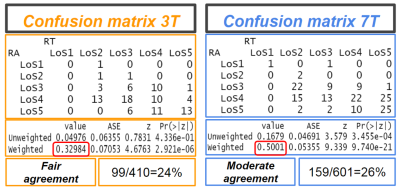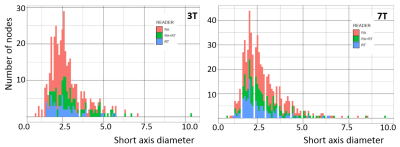Ansje Fortuin1,2, Sjaak van Asten1, Andor Veltien1, Bart Philips1, Thomas Hambrock1, Stephan Orzada3,4, Harald Quick3,5, Jelle Barentsz1, Marnix Maas1, and Tom Scheenen1,3
1Radboudumc, Nijmegen, Netherlands, 2Radiology, Ziekenhuis Gelderse Vallei, Ede, Netherlands, 3Erwin L Hahn Institute for MR Imaging, Essen, Germany, 4University of Heidelberg, Heidelberg, Germany, 5University of Duisburg-Essen, Essen, Germany
1Radboudumc, Nijmegen, Netherlands, 2Radiology, Ziekenhuis Gelderse Vallei, Ede, Netherlands, 3Erwin L Hahn Institute for MR Imaging, Essen, Germany, 4University of Heidelberg, Heidelberg, Germany, 5University of Duisburg-Essen, Essen, Germany
USPIO-enhanced MRI in 20 patients with high-risk
prostate cancer identified significantly more suspicious lymph nodes at 7T
compared to 3T. Although annotating lymph nodes in the pelvis is not an easy
task, 7T improves the interobserver agreement in scoring suspicious nodes.


